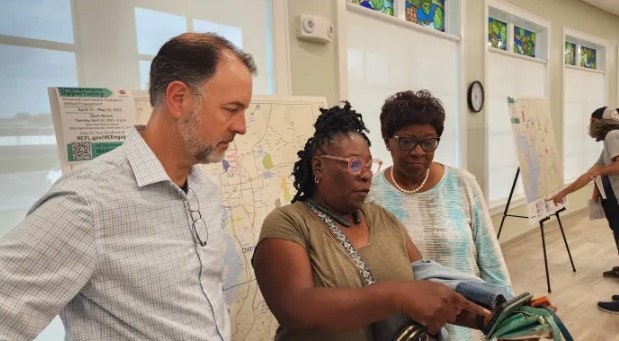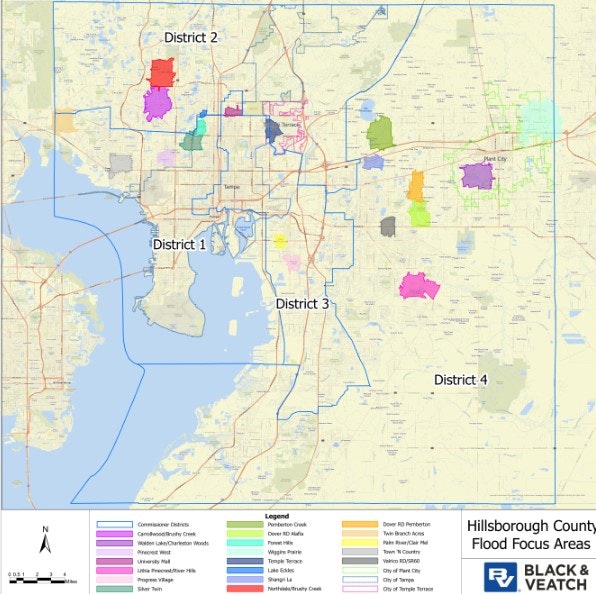Hillsborough County Maps Flood Focus Areas, Seeks Public Input

May 6, 2025
By: Staff Report
After a series of powerful storms brought heavy rains and dangerous flooding, Hillsborough County is taking action to better prepare for the future. Officials have launched a countywide stormwater evaluation aimed at identifying weaknesses in the current drainage system and protecting neighborhoods from future disasters.
The Regional Stormwater Evaluation project looks at how storms like Debby, Helene and, most recently, Milton pushed the county’s stormwater systems to their limits. Hillsborough County is working with Black & Veatch, an independent engineering firm, to collect information, analyze damage and come up with solutions to reduce flood risks.
“Input from residents will be mapped to ensure all areas that experienced flood levels can be taken into consideration,” said Jon Dinges, regional water resources lead at Black & Veatch. He encouraged people to “please include your address and as much information as possible about the flooding, including pictures if available, when submitting your feedback.”
Residents have a chance to get involved by submitting feedback online at the Hillsborough County Education & Engagement Hub. Visit www.hcfl.gov/hcengage and scroll down to the Regional Stormwater Evaluation project. The online form is open until Monday, May 19.
A major part of this evaluation involves identifying ‘Flood Focus Areas,’ neighborhoods that suffered the most severe flooding. A newly released map marks these areas in bright colors across the county’s four districts as determined by compiling flood data and public input mainly from Hurricane Milton. Each color represents a different focus zone where different mitigation strategies may be necessary.

“This was a major storm, larger than our current systems were designed to handle,” Dinges noted. He explained that one of the biggest problems has been clogged canals filled with “debris, overgrown vegetation and sediment buildup. Over time, these blockages have made it harder for water to flow properly during storms.”
Maintenance easements — areas along canals meant for clearing and repairs — have become difficult to access in some places, limiting the county’s ability to maintain them. Expanding these easements may be one possible fix.
Another potential improvement under review is upgrading old pumping stations or building new ones to move water faster out of flood-prone neighborhoods. Engineers are also considering the creation of new retention ponds or underground storage areas to temporarily hold excess stormwater during heavy rains.
In addition to physical upgrades, the evaluation will help the county decide how often canals and drains need to be cleaned and how to improve building rules for new housing and businesses. The goal is to make sure future developments manage their own stormwater so they do not add to existing problems.
Jon added that “identifying the most critical maintenance items and getting on them right away” would be a high priority for both the team at Black & Veatch and Hillsborough County in attempting to alleviate some of the flooding issues endured last year.
